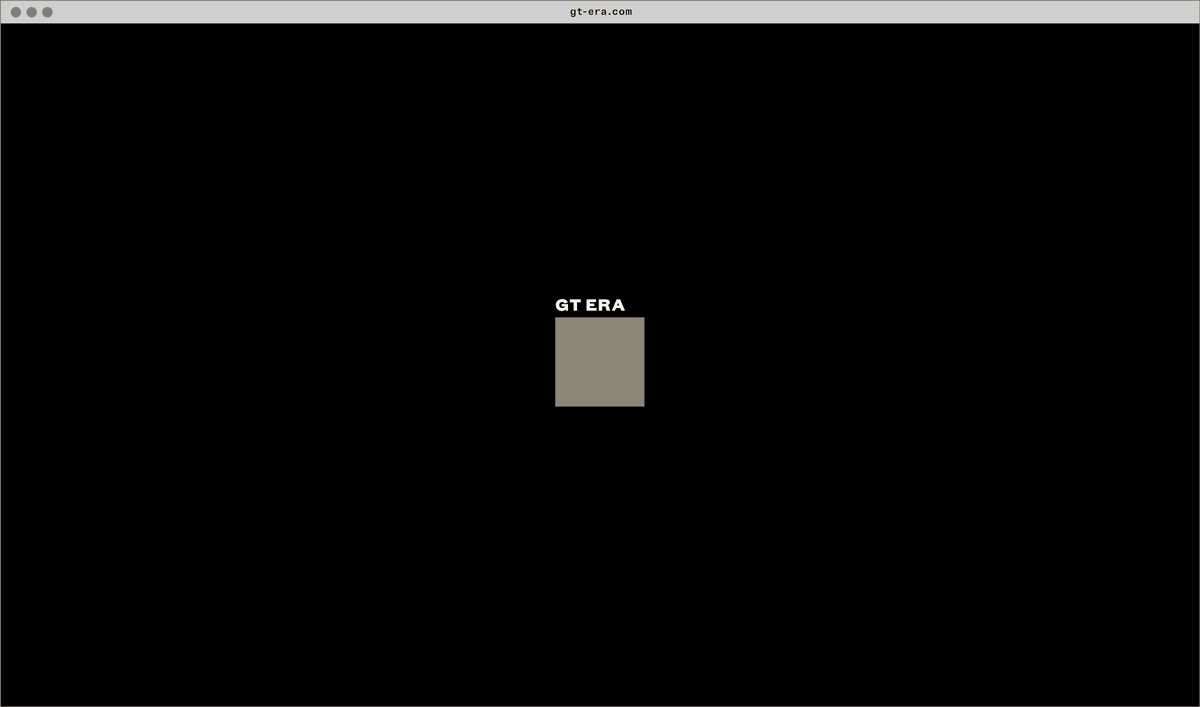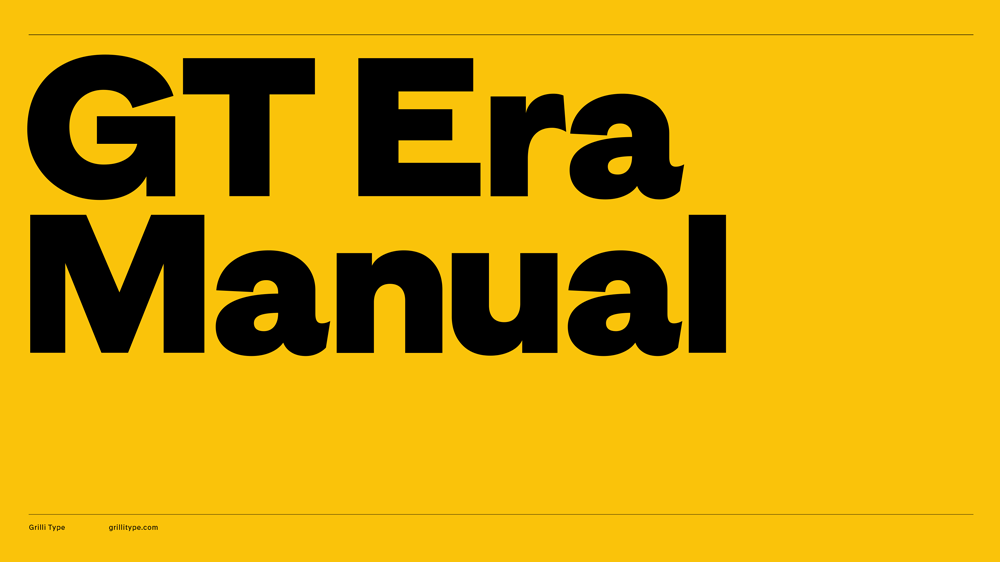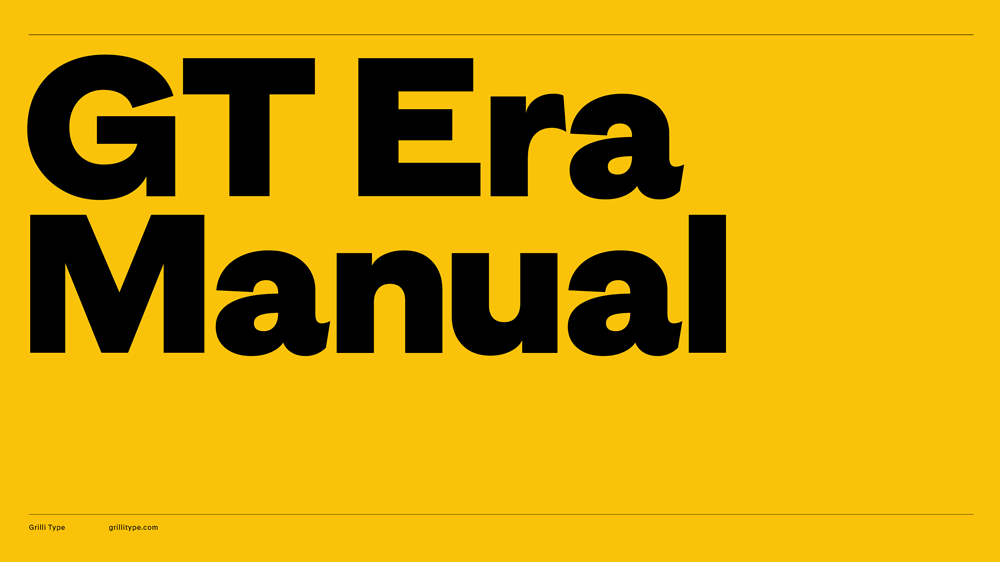GT Era
Family overview
- Display
- Thin Oblique
- Light Oblique
- Regular Oblique
- Medium Oblique
- Bold Oblique
- Heavy Oblique
- Black Oblique
- Text
- Thin Oblique
- Light Oblique
- Regular Oblique
- Medium Oblique
- Bold Oblique
- Heavy Oblique
- Black Oblique
Subfamilies
- Display ThinThey became, for instance, the stimulus for a new typography; they affected photography, advertising, the motion picture, the theater, and have had many repercussions on our whole life today.
- Display Thin ObliqueIn 1920, Albers joined the Weimar Bauhaus as a student and became a faculty member in 1922, teaching the principles of handicrafts.
- Display LightThis meant evolving goods specifically designed for mass-production. Our object was to eliminate every drawback of the machine without sacrificing any one of its real advantages.
- Display Light ObliqueEven I was gripped by a kind of timidity bordering on fear when it came to leaving “the world of will and idea”, in which I had lived and worked and in the reality of which I had believed.
- Display RegularThe creative human being knows (and suffers from it) that the inherent values of life are being destroyed under the pressure of moneymaking, competition, and trade.
- Display Regular ObliqueThe prime essential for fruitful collaboration on the part of our pupils was a complete understanding of the aims that have inspired the New Architecture.
- Display MediumLine Diagram 25: Linear structure of the picture “Little Dream in Red” (1925) by Kandinsky, Wassily.
- Display Medium ObliqueLet us assume it has been decided to erect free-standing blocks of flats on a north by south diagonal and that the site measures approximately 300 × 750 feet.
- Display BoldMoholy-Nagy was the first interwar artist to suggest the use of scientific equipment such as the telescope, microscope, and radiography in the making of art.
- Display Bold ObliqueRecognized for his invention of bicycle-handlebar-inspired tubular steel furniture, Breuer lived off his design fees at a time in the late 1920s and early 1930s when the architectural commissions he was looking for were few and far between.
- Display HeavyEven I was gripped by a kind of timidity bordering on fear when it came to leaving “the world of will and idea”, in which I had lived and worked and in the reality of which I had believed.
- Display Heavy ObliqueOur modern system of production is imposed labor, a senseless pursuit, and, in its social aspects, without plan; its motive is to squeeze out profits to the limit. This in most cases is a reversal of its original purpose.
- Display BlackEach of the various people looking at the cow sees her in a way which is related to his occupation and his talents. The butcher sees the cow primarily as so many pounds of meat, so many pounds of fat, and so many pounds of bones.
- Display Black ObliqueThis meant evolving goods specifically designed for mass-production. Our object was to eliminate every drawback of the machine without sacrificing any one of its real advantages.
- Settings
Typeface information
GT Era reimagines the warmth and idiosyncrasies of early grotesk typefaces for our own era. These pre-modernist tools were being pushed to their extremes in the radical designs of the modernist movements—like Bauhaus and De Stijl—of the period. The typeface shuns neutrality and embraces friction, championing recognition over uniformity and flavor over conformity.
Typeface features
OpenType features enable smart typography. You can use these features in most Desktop applications, on the web, and in your mobile apps. Each typeface contains different features. Below are the most important features included in GT Era’s fonts:
- SS01
- Alternate g
Painting
Typeface Minisite


- Visit the GT Era minisite to discover more about the typeface family’s history and design concept.

